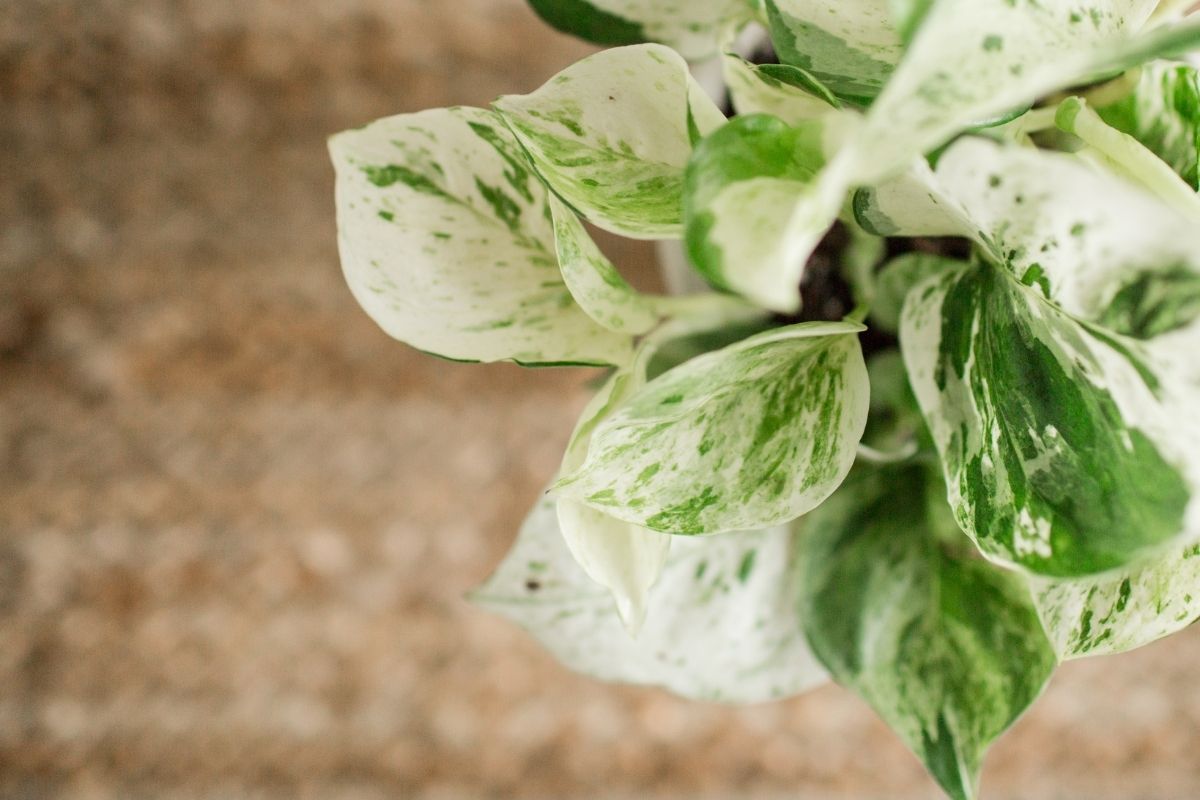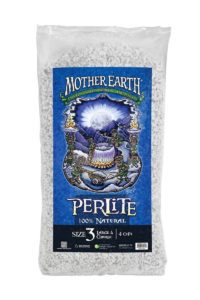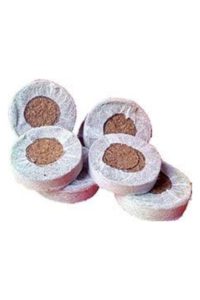With so many houseplant options available today, lazy plant parents have their pick of greenery to enjoy, semi-neglect, and enjoy some more.
The thing is, even the easiest plants to care for have their preferences! The golden pothos (Epipremnum aureum) is a perfect example. Native to tropical climates, pothos is commonly kept as a houseplant around the world today. Many plant owners might think that the best potting soil for their pothos is literally ANYTHING because the plant is that hardy, but that’s not totally true.
Pothos is known for its ability to survive in adverse conditions, which makes pothos perfect for lazy plant parents, yet often frustrates gardeners. When growing outdoors, it’s super difficult to kill (which earned it the designation of “devil’s ivy”) and will retain its green color even when it only receives indirect light. The species is toxic to dogs and cats, so take care to keep pets away – it can cause irritation, vomiting, and breathing issues in your furry friends!
The actual best soil mix for pothos will simulate this jungle plant’s natural environment – not just keep it alive. In this article, we’ll cover what factors to consider when making your own pothos soil, as well as some commercially-available solutions.
what pothos plants need in potting soil
Pothos is native to Mo’orea, a volcanic island in French Polynesia (and a member of the Society Islands) that’s about 10 miles away from Tahiti. The island has a humid, tropical climate that supports lush vegetation, including pothos! We’ve written about how to make your pothos at home as lush and full as its island cousins, but the real secret to abundant foliage? It’s in the dirt, folks.
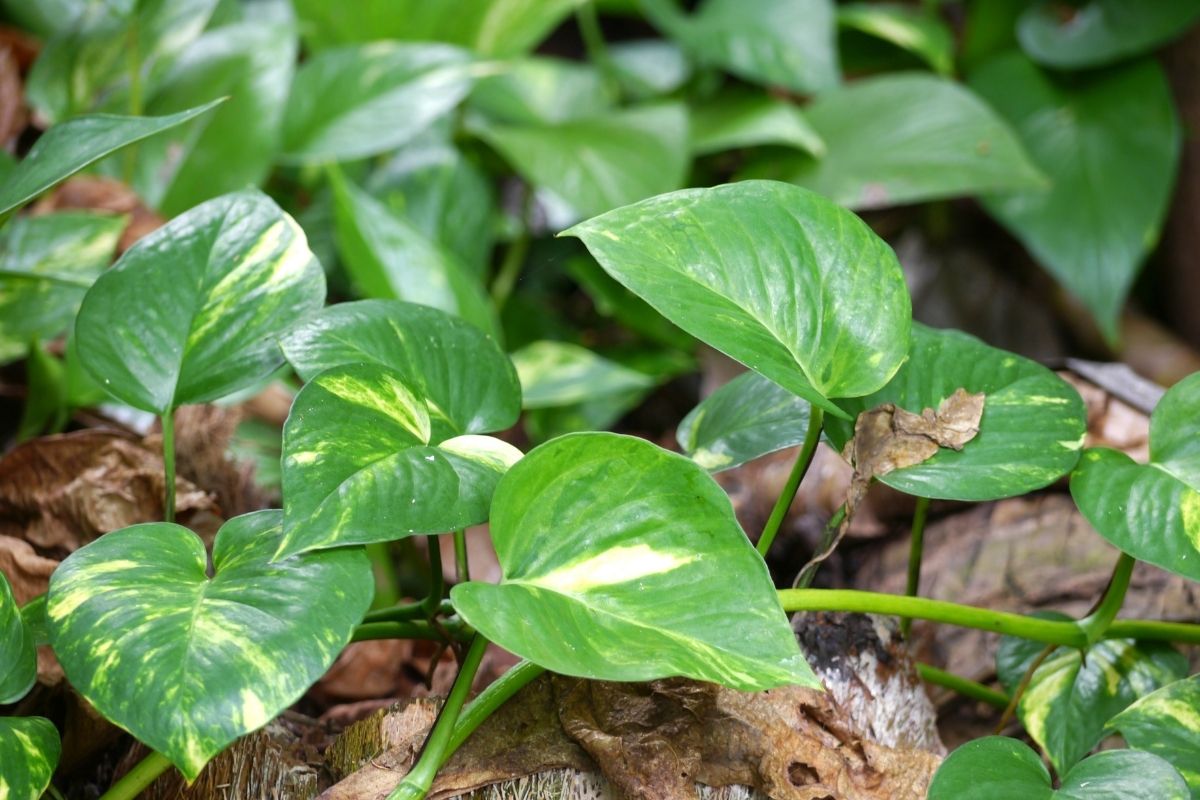
It’s always better to make your own potting mix because it enables you to control the quality and ratio of ingredients easily – and even mix up a batch for a specific plant without having a big bag of leftovers. Here are the six elements of the perfect soil type for pothos plants:
- Good Drainage. Well-draining potting soil is a necessity, as pothos roots do not like to sit in too much moisture. Amendments like perlite can improve the drainage properties of your pothos soil mix.
- Adequate Moisture. This goes hand-in-hand with good drainage—while the pothos plant does not enjoy excess water, it still requires a healthy amount of moisture. Vermiculite and other amendments can be used to hold moisture and prevent you from needing to water too often.
- Nutrients. Pothos are fast-growing plants that thrive in nutrient-rich soil in tropical regions. A good soil mix for pothos will include a hefty dose of compost, fertilizer or other nutrient sources. In general, pothos plants will perform well with a balanced fertilizer ratio (such as 15-15-15).
- Acidic Soil. Pothos plants prefer an acidic soil pH range between 6.0-6.5. You can easily test your soil’s acidity (and moisture and light too) with a soil meter.
- Adequate Aeration. Tightly-packed soil can lead to issues with your house plants. Most well-draining soil will also provide enough aeration for pothos plants.
- Proper Container. In addition to well-draining soil, a container with drainage holes should be used when planting. The container should be of an adequate size to prevent the pothos plants from becoming root bound.
signs that your pothos is in the wrong soil
The thing with pothos is that they won’t usually full out die when planted in the wrong soil. They typically lose their luster instead, often growing more slowly and producing fewer leaves. If you’re watering your pothos regularly and notice a less-than-perky plant, it’s likely a soil issue! Scale infestations on pothos can hide just below the surface of your soil and affect the root system. Whether the problem with your pothos’ soil is a lack of nutrients or moisture, root rot, poor drainage, or pest infestation, these are the warning signs it’s time to mix some fresh soil for your plant:
- Brown or Yellow Leaves. Yellowing leaves can be a sign of root rot, a fungal pathogen that thrives in wet soil. To avoid this issue, make sure your soil is draining well and that you are watering at appropriate intervals.
- Fungus Growth. If your potting soil is harboring fungus or fungus gnats, then the soil likely isn’t draining well enough. To fix this, the potting mix will require more perlite, or the container will need a better drainage system.
- Stunted Growth. If your pothos plant growth has slowed, then you may need to add nutrients to the soil. A balanced fertilizer (i.e. 15-15-15) usually works best to create a nutrient-rich environment for your plants.
- Drooping Plants. If your pothos plants are beginning to wilt, the soil may be too dry. Make sure your watering cycles are consistent, and always water thoroughly when the soil feels dry to a depth of one inch. You can improve your soil’s water retention by adding vermiculite or pine bark.
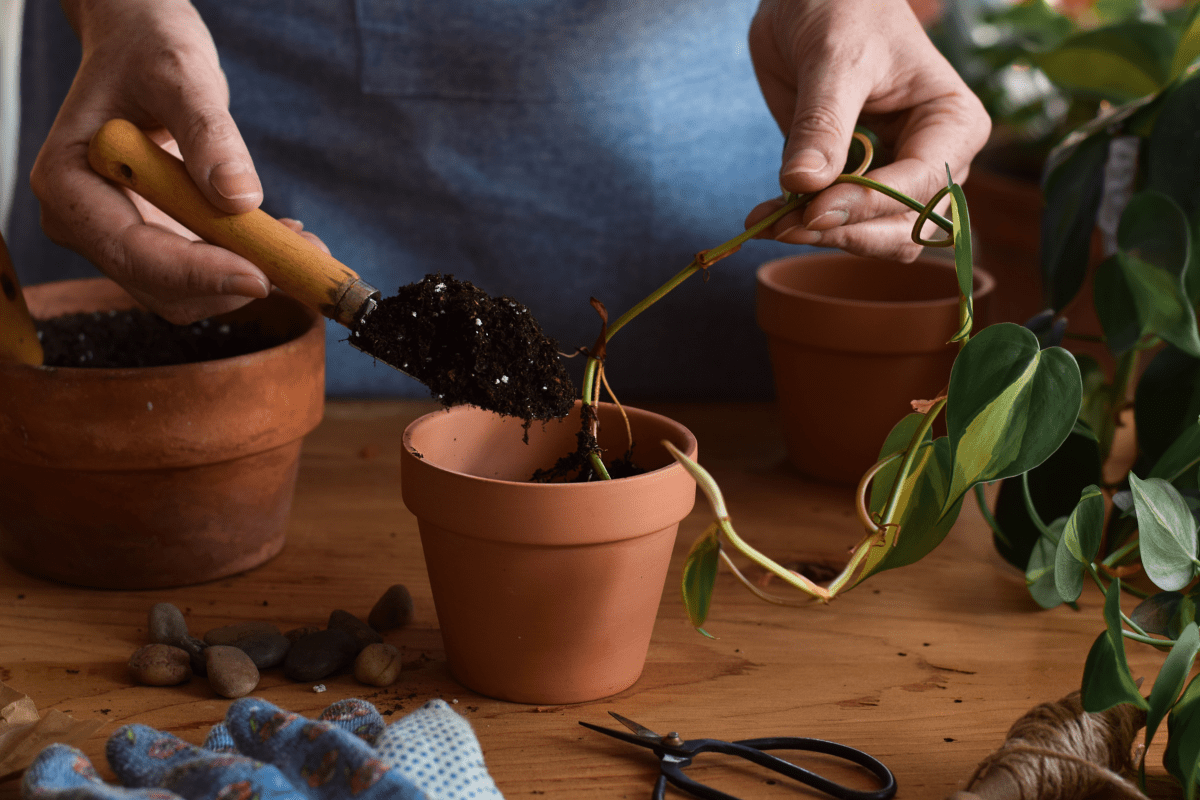
how to make the best soil for pothos plants
To create the best pothos soil mix, you only need a few simple ingredients that should be available at your local garden center.
For your soil builder, we recommend avoiding peat moss. This medium is an unsustainable product that contributes to global wetland destruction – big no no for plant lovers everywhere!! Coco coir is our favorite substitute for peat moss at the Indoor Nursery, and actually performs better in most cases.
The exact amounts of each ingredient will depend on the amount of soil you need for your pothos, so ratios are provided instead. Here’s the recipe:
- 10 parts Coco Coir
- 5 parts Perlite
- 4 parts Vermiculite (or Shredded Bark)
- 1 part Compost (or other suitable plant food)
Step 1: Choose the pot you’ll be using for your plants. Your container should be at least twice as large as your pothos’ soon-to-be-planted root ball to give its roots adequate space to grow. In addition, it should have an efficient drainage system. Once you’ve chosen the perfect pot, you can determine the volume of potting mix that you need.
Step 2: Measure out your ratios and add the ingredients together in a large 5-gallon bucket (or similar container – you’ll want something with lots of space for your ingredients to mix, like when you’re tossing a salad). Mix away! If you don’t mind getting your hands dirty, feel free to mix by hand. Otherwise, a small shovel or other hand tools will do the trick.
Step 3: Once the dry ingredients are thoroughly combined, add enough water to lightly moisturize the soil and mix one last time. If using a liquid fertilizer, add it in with the water.
Step 4: Add the moist soil to your container. Dig a hole about 1” deeper than your pothos root ball, place the pothos in it, and backfill the hole with soil. Water the plant thoroughly.
store-bought pothos potting mix
If only we all had time to whip up a couture potting mix for every one of our plant princesses! If you don’t, or simply don’t want to – no need to worry. There are some pretty good commercial alternatives to hand-blended soil that will provide your pothos plants with everything they need to thrive. Some of these products will have the ratio of ingredients listed on the bag, which you can reference against our guidelines above for a quality check 😉.
Many all-purpose potting soils will work just fine for pothos – especially those formulated for indoor plants.
Some commercially available options we can recommend include:
- Miracle-Gro Indoor Potting Mix: This potting soil contains sphagnum peat moss, coco coir, perlite, fertilizer, and a wetting agent. The fertilizer ratio is 0.25-0.13-0.19, which is not quite balanced, but should still work well for pothos plants. Some users have found that this indoor potting mix retains excessive moisture, so it’s a good idea to toss in a handful of perlite before using it on your pothos.
- Fox Farms Ocean Forest Potting Soil: Fox Farms is a premium garden-product company with an emphasis on soil microbes and high-quality potting soils. The Ocean Forest pre-mixed soil is one of their most popular offerings and consists of aged forest products, sphagnum peat moss, earthworm castings, bat guano, fish emulsion, and crab meal. It features a slightly-acidic soil pH, which pothos plants prefer. The fertilizer ratio is 0.30-0.45-0.05, so you may wish to add a fertilizer with a high ratio of potassium.
- Jessi Mae Air Cleaning Plant Soil: This is the best soil mix for pothos! It’s a bit of a splurge and occasionally sells out online because it’s mixed in small batches in the US. The organic, chemical-free soil mix is formulated specifically for pothos plants and related species. It features a slightly-acidic soil pH and a fluffy, aerated consistency to avoid root rot.
More about pothos
- How Often To Water Pothos Plants (And When To Cut Back)
- Marble Queen Pothos Care Guide
- How To Make Pothos Fuller (In 5 Minutes)
- Our top pothos fertilizer picks for luscious vines
- Golden Pothos plant care: how to keep them happy
- Pothos root rot: what to look for and how to fix it
- How to grow pothos in water for *decades*

